Solar-Powered, Wireless Micro-Telecomms Bridge the Rural Digital Divide
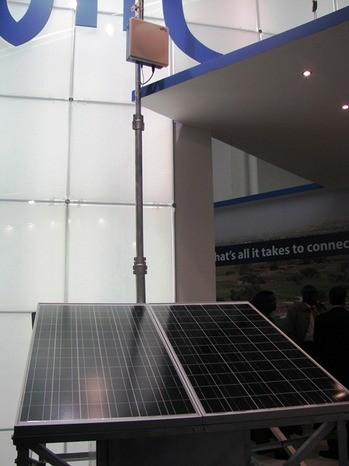

Aiming to bridge the digital divide in India and developing countries worldwide, Vihaan Networks Limited (VNL) has been promoting a wireless micro-telecommunications infrastructure solution that is proving to be low in cost, simple to install, and easy to maintain. Powered by solar photovoltaic panels (PV), it also eliminates the need for mobile telecoms operators to rely on diesel fuel to power wireless base stations and associated infrastructure.
An open-access rural fiber optic network provider and a wireless Internet Service Provider (ISP) have brought Vihaan's “green” wireless broadband infrastructure to the US. Working with Vihaan, Mid-Atlantic Broadband Communities (MBC) and Gamewood Technology Group have deployed a pilot-scale installation of Vihaan's WorldGSM Rural Site and Village Site solutions in the rural southern Virginia town of Halifax, the companies announced on Feb. 5.
Green wireless broadband for unserved rural communities
Hollowed out by the loss of furniture and textile manufacturing and tobacco production, southern Virginia business leaders got together with telecoms experts to develop a blueprint to revitalize the regional economy. Mid-Atlantic Broadband Communities (MBC), an independently operated, open-access wholesale fiber-optic network operator, was established in 2004 with support from federal and state government agencies.
Building out its open-access fiber optic network, MBC reached cash-flow breakeven in 2007. In 2010 and 2011, it was awarded $32 million in American Recovery & Reinvestment Act (ARRA) Broadband Stimulus Program grants through the National Telecommunications and Information Administration's Broadband Technology Opportunities Program (BTOP) to carry out three projects to further extend broadband Internet access across the region, including $16 million to provide broadband fiber network connections to all unserved K-12 schools in southern Virginia.
Looking to enhance the overall sustainability, as well as geographic reach, of its fiber optic network, MBC partnered with wireless ISP Gamewood Technology Group and turned to VNL's solar-powered WorldGMS Rural Site and Village Site solutions.
“Bridging the Digital Divide is a critical piece of our mission," MBC president and CEO Tad Deriso added. “We continue to try new things to enable ISP’s to expand their last-mile reach. We believe a solar-powered wireless broadband platform can be a benefit to continue expansion of low-cost wireless broadband services in hard to reach, rural areas of Southern Virginia.”
With mobile telecoms access exploding, India's wireless network operators are burning an estimated 1.8 billion liters of diesel fuel per year to power their networks, VNL notes. Not only does the company's eliminate the need to burn diesel, it has drastically scaled down the amount of power, and number of solar panels needed to power a wireless base station. “A single traditional GSM Base Station would require a solar panel covering 200m². WorldGSM™ Base Stations only need two 3m² panels,” VNL states.
Looking to take “a new approach to delivering low-cost, GSM and high-speed broadband to unserved rural communities across the globe,” the pilot test in Halifax will enable MBC and Gamewood “to test the coverage, speed and functionality of unique wireless rural broadband access equipment and evaluate the technology for wider deployment in rural, unserved communities,” MBC explains in a press release.
VNL founder, chairman and CEO Rajiv Mehrotra commented on the pilot program, saying,
“We are delighted to partner with MBC and Gamewood to deliver wireless broadband access in the Town of Halifax, Virginia, USA. This historic and scenic town is such a contrast to the harsh topography of remote areas of Asia, Africa and Latin America, where VNL has deployed GSM and broadband networks. That’s the beauty of a simple, sustainable solution like WorldGSM – it fits in fine, anywhere. Compact and green, it’s showing the way to deliver cost-effective access to unserved communities.”
Added Halifax Town Manager Tom Espy,
“Downtown businesses and visitors to the historic County Seat were accustomed to free Wi-Fi when Pure Internet/Kinex offered the service until the company closed its office 2 years ago. MBC and Gamewood Technologies have provided their wireless expertise, allowing our community to once again possess an enhanced technology which improves the overall business climate and quality of life we seek as part of the town’s ongoing revitalization.”
Image credit: VNL
Chew on This: WSU Researchers Sticking Gum to Lithium Batteries


It’s usually a bad thing to "gum up the works," but in the case of the safety issues confronting lithium ion batteries, maybe gum is the solution.
Washington State University researchers have developed a chewing gum-like battery material that could dramatically improve the safety of lithium ion batteries.
A WSU group led by Katie Zhong, Westinghouse Distinguished Professor in the School of Mechanical and Materials Engineering, recently reported on their work in the journal, Advanced Energy Materials. And they have filed a patent on the substance.
High-performance lithium batteries are widely used in everything from computers to airplanes because they are able to store a large amount of energy in comparison to other types of batteries.
But they do have a serious downside, as companies such as Dell and Boeing have found out. Their biggest potential risk comes from the electrolytes in the battery, which is made of either a liquid or gel in all commercially available rechargeable lithium batteries. Electrolytes are the part of the battery that allow for the movement of ions between the anode and the cathode to create electricity. But if the liquid acid solutions leak, a fire or chemical burn hazard can result.
While commercial battery makers have ways to address these safety concerns, such as adding temperature sensors or flame retardant additives, they “can’t solve the safety problem fundamentally,’’ says Zhong.
So the WSU researcher developed a gum-like lithium battery electrolyte, which works as well as liquid electrolytes at conducting electricity, but doesn’t cause a fire hazard.
According to the university, researchers have studied solid electrolytes to address safety concerns for some time, but they don’t conduct electricity well and it’s difficult to connect them physically to the anode and cathode. Zhong’s group looked for a material that would work as well as liquid and could stay attached to the anode and cathode, “like when you get chewing gum on your shoe,’’ she told her students.
Yu “Will” Wang, a graduate student, designed his electrolyte model specifically with gum in mind. It is twice as sticky as real gum and adheres very well to the other battery components.
The material—technically known as “nanoporous polymer-ceramic composite electrolytes”—is a hybrid of liquid and solid, and contains liquid electrolyte material that is hanging on solid particles of wax or a similar material. Electric current can easily travel through the liquid parts of the electrolyte, WSU says, but the solid particles act as a protective mechanism. If the material gets too hot, the solid melts and stops the electric conduction, preventing a fire hazard.
The electrolyte material is also flexible and lightweight, which could be useful in future flexible electronics because it can be stretched, smashed and twisted, while continuing to conduct electricity nearly as well as liquid electrolytes. In addition, Zhong says the gummy electrolyte should be easy to assemble into current battery designs.
While the researchers have shown good conductivity with their gummy electrolyte, the next step is to begin testing the idea in real batteries. Zhong’s group was part of a larger group of WSU researchers that received support from the Washington Research Foundation last year to equip a battery manufacturing laboratory for building and testing lithium battery materials in commercial sizes. The research groups are also working together to combine their technologies into safer, flexible, low-cost batteries.
Thanks to scientific research, sticking it to lithium batteries could be the solution that adheres for increased safety. But does it come in flavors?
Image: Battery+Zhong via the WSU media transfer site
Interview: Cisco and AGT Launch Strategic Partnership on Smart Cities
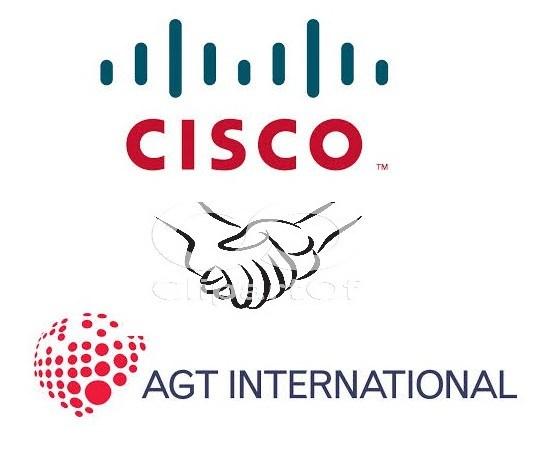

Cisco Systems, makers of networking gear, software and solutions, has recognized, as a company, that it is in a great position to capitalize on the coming trend to connect everything, whether it's people or processes or machines.
That trend is estimated to be worth somewhere in the neighborhood of $14 trillion over the next decade. Whether it's the industrial Internet, big data or smart cities, the company is reinventing itself as the purveyor of the Internet of Everything (IoE), also known as the Internet of Things (IoT). Last year they acquired building efficiency solution provider Joulex, which offers enhanced opportunities to reduce IT-related energy consumption in buildings through their expanded EnergyWise suite.
Cisco has been working in the smart cities space for seven years now --- providing services including traffic management, parking assistance, waste management, pollution reduction, virtualized learning, security and health care.
This week they took another major step, announcing a strategic partnership with AGT International -- a solutions provider that works specifically in the smart cities space, where they have fielded an impressive array of solutions ranging from law enforcement, to environmental monitoring to citizen services.
I spoke with Wim Elfrink, Cisco's executive vice president and chief globalization officer, and Geoff Baird, president of AGT's Product & Technology Group, about the announcement.
Triple Pundit: What is the rationale behind this strategic partnership?
Wim Elfrink: Take a look at the demographic shifts that are occurring, with so many people moving into cities. There will be competition between cities for labor , innovation -- and young people. So they will need to address the sustainability agenda of environmental concerns, climate change, rising water levels and so on.
AGT will be providing software solutions supported by our infrastructure, data centers, video management systems, intelligent cameras, etc. AGT has specialized in connecting people, processes, data, and things and have unleashed the potential of services that are already available in the cities to create flood warning systems, energy management [and] traffic congestion reduction.
At Cisco, we say that only 1 percent of what can be connected has been connected, so there is a great deal of untapped potential. Over the past 12 to 18 months, we've been working on an integration of our solutions that will be coming out this summer, that will be evolving from premise-based to cloud-based, and eventually to pay-as-you-go. They will span across infrastructure, services and operations.
Geoffrey Baird: AGT is a privately held technology company, focused on the smart city space for the past seven years. As Wim said, given the urbanization trend, where 50 percent of population is already in cities, 3.5 billion, a number that is expected to double in a few decades, cities can no longer manage using the approach they've used in the past.
Our solutions will help to manage cities—safety level, traffic level, pollution. The IoE creates the digital footprint of the city, the connection, the ability to understand what is happening across the whole city. And it allows us to integrate a wide variety of services, using things like cameras, license plate readers, smart meters, building controls, and smartphones which are enabling citizen-as-sensor.
3p: It almost sounds like cities are becoming more self-aware. Can technology make a city great, or are we just looking and hoping to increase capacity in order to manage the enormous urban influx, which is estimated today at 10,000 people per hour?
WE: We can improve quality of life. Problem sets vary by region and as you move up the economic pyramid, but many of these can be addressed with these kinds of services. In the developed world there [are issues like] aging population, assisted living, getting cars off the roads. In the developing world, you have rapid population growth driving needs. Cities like Bangalore now need new a hospital every six months--and a new school every three months. That's never going to happen.
Look for virtualization of education and health care. But it's not going to happen overnight in a world where 2 billion people live on a dollar a day, and are not connected, but it's coming. Technology has become a new essential infrastructure, and also a key enabler for sustainability.
GB: We think we can make cities great and we can do it through the engagement of citizens. Innovation happens through integration of people. We are creating a platform that allows citizens to engage with the city. Cisco research in Germany has concluded that consumer engagement will drive the Internet of things. We are currently building a system in Germany that enables citizen control over local power--integration with the grid, while managing privacy at the same time.
3p: Sounds like empowerment (no pun intended), using technology to bring individual voices into the conversation. Could this be a template for future applications?
GB: Absolutely. For example, we have a smartphone app that links directly into the city control room. It's based on a fusion engine (running a Cisco UCS technology) that takes in all data in an automated way [and] correlates and authenticates it before dispatching the appropriate response. It could be anything from uncollected trash, to an open pothole to a crime report . Once received it becomes an active alert. It's a complete (closed loop) circle, though it's not been publicly announced yet.
3p: How do you interface with the non-technical world? How do you ensure that you are not creating solutions that are looking for problems?
WE: We have a case study in Barcelona. City architects are working together with utilities. We asked them: What are your most pressing problems? We heard everything from energy management, walkability, traffic congestion, crime, equality, education, health care, and so on. They began looking at the problems and issues holistically. Not a silo approach but multidisciplinary. Now, they have a master plan that can leverage technology to solve these problems in an innovative type of way. Then we can easily see, five-year plans that can be tied to aspirational goals: Energy efficiency increased by 30 percent, water usage decreased by 50 percent, traffic goes down, crime goes down--as people are happier and get more involved.
GB: One of the key things we talk about is the concept of operations. We create a digitization and work-process flow of expertise and skills. We capture the workflow expertise of a waste management worker, or a police officer. The conversion of that knowledge into a set of algorithms and rules is a core focus of this alliance. In so doing, we are creating a knowledge cloud that helps you run a city.
3p: This sounds like it could be very helpful on one hand, but also a bit Orwellian on the other. How do you avoid that?
GB: Isolation of content and privacy are extremely important. We might look at the movement of a crowd, but not at individuals within that crowd. It's best to keep it anonymous, done in a way that protects individual citizens.
3P: Well, I think individual citizens would prefer it that way, the NSA notwithstanding. It reminds me of a story I heard on NPR about researchers in Seattle tracking drug abuse trends in the city by measuring the concentration of certain drugs at the waste-water treatment plants.
GB: That's an excellent example.
3P: I know we're just about out of time. What are each of you most excited about regarding this new partnership?
WE: From Cisco's perspective, this work really makes our network infrastructure relevant. The fact that it allows cities to move from reactive to proactive planning. This will substantially contribute to the sustainability of cities.
GB: As a much smaller and younger company, this endorsement by Cisco is a great validation of the investments we've made and the work we've done.
RP Siegel, PE, is an inventor, consultant and author. He writes for a number of sustainability sites including Triple Pundit and Justmeans. He co-wrote the eco-thriller Vapor Trails, the first in a series covering the human side of various sustainability issues including energy, food, and water in an exciting and entertaining format. Now available on Kindle.
Follow RP Siegel on Twitter.
Electric Scooter Share Business 'Scoot,' Grows in San Francisco


Back in October 2012, we reported on a new urban mobility service operated by Scoot Networks, which at the time had just beta-launched in San Francisco. While similar to the numerous bike-share operations that have sprung up in hundreds of cities around the world, Scoot modified that model; from its website, "Scoots are shared, electric, smartphone-activated motor-scooters you can ride in the city."
As a membership-based service, riders can use Scoot's app to locate available scooters from numerous locations around the city, check the state of charge of any given vehicle, and by docking their smartphone, unlock a ride to go about their business.
Sixteen months on, this week I spoke with Michael Keating, Scoot's CEO, to hear how their business is developing. Things appear to be on the up.
Following their September 2012 launch, 2013 saw the company move through a steep learning curve -- figuring out how to operate the service, work out the kinks and as Keating says, "raise a bunch of capital."
This year will see the company build out the service in San Francisco, with the aim, Keating says, "to make it a fully fledged service for the city." Growth has already been significant. At launch, Scoot operated from four staging locations in the city's South of Market neighborhood, with just 20 Scooters. Since then, they've expanded to 12 locations, and with a further five opening up this week, Scoot will offer members 17 locations throughout San Francisco to pick up a scooter.
In addition, the company is expanding its fleet this week, bringing the number to more than 50 scooters available for members to use. Better still, they are lowering their pricing to $3 for the first half hour and $1.50 after that, which Keating tells me, makes any trip under an hour now cheaper than before.
Significantly, the new pricing reflects changes in usage patterns that Scoot has observed since they offered "one-way" rides between staging locations last summer. Initially, the service required that members begin and end their trips from the same location. Now, people can take a scooter from one location and drop off at another, which has tended to make trip duration shorter. Since offering one-way trips, they have rapidly become the majority of rides taken, and the new pricing makes the service even more affordable. At the same time, with shorter, one-way trips, scooters go back into service for other members to use sooner, making the network more efficient.
For a relatively small fleet of vehicles at the outset, over the past 16 months, Scoot has enabled 10,000 rides while covering an aggregate distance of more than 50,000 miles. The company estimates its service has kept 62,000 pounds of CO2 from the environment.
Based on the Scoot team's experience so far, I asked Keating if they had come across any surprises. He told me they were, "surprised by the variety of usage." As expected, many members use the service for commuting, but they also found a significant number of people using the service on a once-per-week or once-per-month basis, to run errands, go to the gym or simply check out a new neighborhood. Also, many members who initially used the scooters for recreation then began to realize they're also a fast and economical way to get around the city, leading them to start using the service for more practical purposes.
Of course, there are many ways to get around tech-infused San Francisco. In the 16 months since Scoot has been in business, the Bay Area bike share program has started, while app-based taxi substitutes such as Uber and Lyft have proliferated. I asked Keating whether these alternatives had made growing Scoot more challenging. Instead he said, "we see them as complements." Taxis are useful if people have been out drinking, for example, and bike share is cheap, but you quickly run into hills in San Francisco, so, "We play our own role."
Going forward, I asked about plans for expansion to other cities. "We're looking to explore, but probably won't be in other cities before 2015." However, Keating says they are informed by bike sharing programs that have exploded in recent years, explaining that since Paris launched theirs in 2007, that model has been copied in more than 700 cities worldwide in less than seven years. If the market for shared electric scooters is even a fraction of that, it paints a potentially rosy future ahead.
Image Credit: Photo courtesy of Scoot
How do you use an awards scheme to engage your stakeholders?


The online community 2degrees is all about engagement.
For the past six years it has been helping companies large and small solve their sustainability challenges by facilitating peer-to-peer collaboration via its online platform. Today, it is the world’s largest community for sustainable business professionals, with more than 35,000 members.
And of these members, many use the community to engage and influence their stakeholders – whether through the plethora of forum threads and blog posts, or via webinars and feature articles.
And when it launched its awards and recognition scheme, it was keen to keep this core 2degrees reason-for-being centre of mind – to create a sustainability awards scheme like no other, one that its members could use as a key component of their stakeholder engagement efforts.
And that’s exactly what happened.
Now in its second year, 2degrees is once again calling for organisations and individuals with inspiring examples of sustainable business practice to shout about their success stories by entering this year’s 2degrees Champions Awards.
As the only sustainable business awards voted for entirely by industry peers, the 2degrees Champions Awards offer recognition to those using innovation to push the boundaries of environmental, economic and social sustainability.
Last year’s winners included a range of start-ups, SMEs and FTSE-listed businesses including Unilever, The Co-operative Group, Sky, O2 and SC Johnson.
Last year’s Sustainability Champion of the Year, Sky’s Daniella Vega, described the Awards as being "in many ways, a lot more powerful and humbling than being selected by a group of judges - there’s something very healthy about being scrutinized by your peers”.
What makes the 2degrees Awards different to other awards schemes is its use as an effective stakeholder engagement tool. And not just for those that win, but for all those that enter too.
From encouraging your staff to vote for you, to bringing your commercial teams to the Awards ceremony itself, as was the case with winning business O2. “The 2degrees Champions Awards are actually an engagement tool in their own right,” said O2’s Katie Hyson. “Even if you’re not a winner, the Awards give you a great opportunity to drive enthusiasm and interest in that particular project.”
The 2degrees Champions Awards are a recognition and reward scheme like no other in that – from a stakeholder engagement stance, at least – it creates many winners before a vote has even been counted.
Entries for the 2degrees Champions Awards are open until midnight on 14 February 14 2014.
To find out more and enter click here
CVS to Stop Selling Cigarettes - Doubles Down on Health Services
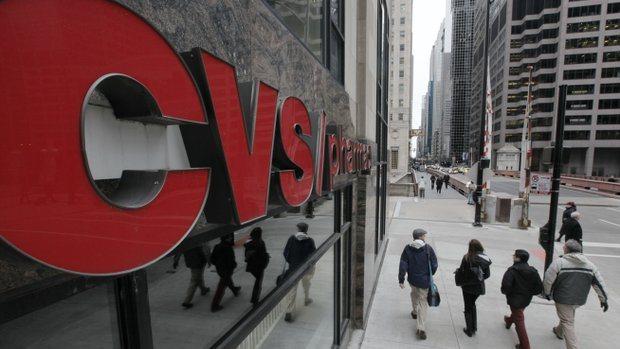

CVS/pharmacy announced it will voluntarily stop selling all tobacco products at 7,600 U.S. stores, as an effort to do the right thing and fulfill its purpose: "Helping people on the path to better health."
The decision will take effect on Oct. 1, 2014, following the launch of a smoking cessation program this spring, with the goal of helping millions of Americans quit smoking.
"Every day, we are helping millions of patients manage chronic conditions, like high blood pressure, high cholesterol, and diabetes, and all these conditions are made worse by smoking," says Larry Merlo, president and CEO of CVS Caremark. "Tobacco products have no place in a setting where health care is delivered. When we asked ourselves where we expect to be in the future as a health care company, it became clear that removing tobacco products from our stores is the right thing to do."
CVS/pharmacy Rebrands
This move will give CVS, currently the No. 2 drugstore chain the U.S., an opportunity to set its brand apart from Walgreens, the largest pharmacy chain, and Rite Aid, which ranks third. Consumers are increasingly looking to the Internet to buy many of the items currently sold at these chains, but pharmaceutical sales continue to rise. There is a growing health and wellness trend currently underway in the country and some people feel that the U.S. Affordable Care Act requires promoting public health.
CVS is the first national pharmacy to pull tobacco from the shelves, which might motivate other national pharmacies to do the same. Target stopped selling cigarettes in 1996, as did Wegmans Market, an East Coast supermarket chain, in 2008.
The recent announcement helps align CVS/pharmacy with these trends and sets it apart as a leader, and we are likely to see other companies follow a similar trend. CVS has increasingly transitioned to providing health care services, and not merely doling out pills. Smoking cessation is a good target for companies wishing to promote health, given that it accounts for 480,000 deaths each year in the U.S. and is the leading cause of preventable death.
Smoking rates have fallen significantly from 1965, from 43 percent of the American population to 18 percent today. Cigarette sales have even fallen 31.3 percent from 2003 to 2013, according to the Euromonitor International. It's worth mentioning that CVS/pharmacy will continue to sell other items that contribute to high blood pressure, high cholesterol and diabetes, such as liquor, soda and king-size candy bars.
Financial Impacts
Regardless, this decision will have a noticeable financial impact on the company, which expects to replace some lost cigarette revenue through smoking cessation programs. The company currently has $2 billion in annual tobacco sales, and an expected 2014 revenue of $132.9 billion. This move will certainly look good in the eyes of doctors, insurers and the 82 percent of Americans that don't smoke. But will it strengthen the brand enough to forgo the revenue loss?
The good news for CVS is that the future looks bright for pharmacy revenue. Third quarter profits in 2013 were up a staggering 25 percent, largely due to generic drugs sales. It has benefited from the expiration of patents covering top-selling drugs, thus enabling it to sell more generic drugs where it receives a higher margin. The U.S. is one of two countries that allows direct marketing to consumers, $2.4 billion was spent in 2011 on ads about pharmaceuticals, which fuels continued drug industry growth. Prescription drugs are the fastest growing sector in American healthcare, going from a $12 billion industry in 1980 to a $275.6 billion industry in 2010. The average American spent $898 on prescription drugs last year, far more than other developed countries. One in four children are on medication for chronic conditions, and this doesn't include prescriptions for acute conditions or over-the-counter medicines. This spending is likely to continue as these children enter adulthood.
Given this, it does seem to make good business sense to focus on drug sales, by refining the brand and having well-trained pharmacists and nurse practitioners on-hand as a competitive advantage. It seems more like the decision is part of a broader rebranding effort than a publicity stunt, although they may as well get some attention for it. The pharmacy market is crowded and competition is fierce, so it is smart for CVS/pharmacy to set itself apart, and kick the tobacco habit.
Smart Energy Storage Becomes the New Power Source
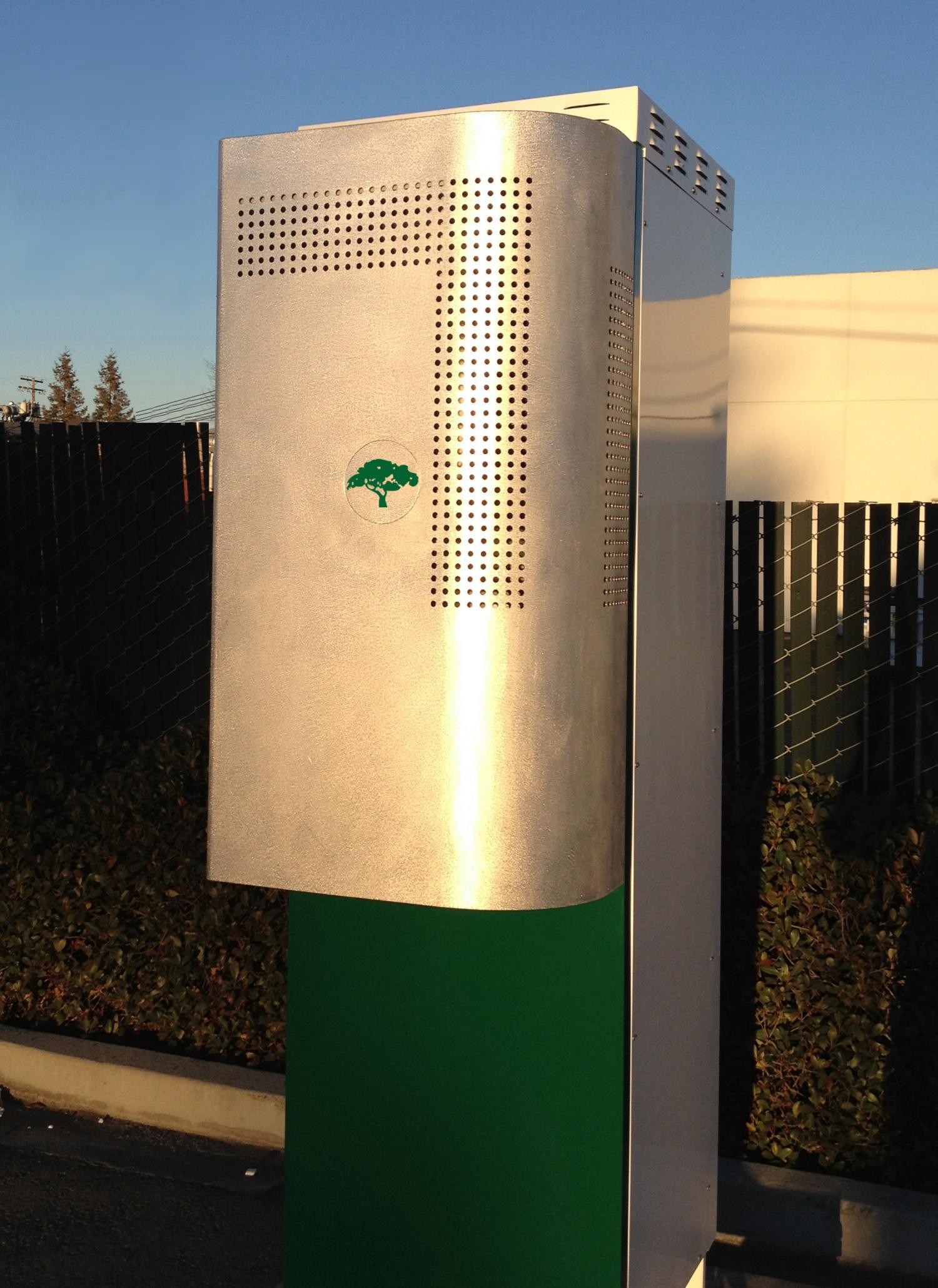

Fossil fuels have long held an advantage over renewables in that they provide a combined energy source and storage medium in one substance, be it gasoline, coal, oil or natural gas. The fact that you can save it, store it, then use it continuously whenever you need it is a tremendous convenience.
That gap is now being closed with the advent of combined solar-storage systems. These new systems not only match the capability of fossil fuels, but can actually go them one better. How? By taking advantage of the separation between energy source and storage medium, a number of new suppliers are now inserting intelligence between the two, allowing users to effectively blend their renewable resources with conventional ones in ways that are most advantageous.
Take, for example, Green Charge Networks (GCN), who provides battery storage combined with solar panels in a system that employs predictive algorithms to anticipate a building's demand for electricity on a moment-by-moment basis. This information is then used to smooth out demand, resulting in significant savings in demand charges. The company just reached a milestone this week of 1 MW of installed capacity.
So what are demand charges and what are they for?
The utilities explain it with a single word: capacity. They need to be able to deliver every single watt of power to every single customer at any given moment of the day. If they fall short, the whole system could crash. When you turn on a light or start your dishwasher, you're probably not thinking about how many other people are making demands on the system at the same moment. But your electric utility would like you to. Because if you don't that could mean they need to build another power plant to increase their capacity. And power plants are very expensive. So they charge a fee for demand, which in states like New York and California, can amount to as much as 40 percent of the entire electric bill or more. This is done both to incentivize limit-setting (they sometimes even pay customers for demand reduction) and to help pay for new capacity, should it be needed.
Then there is also the question of so-called peaker plants that can be brought online quickly to respond to surging demand. They tend to be less efficient and more polluting than plants that run continuously.
So, reducing peak demand can not only save customers money, it can also help reduce pollution, including carbon emissions. Furthermore it can also help stabilize the grid. These reasons were all cited by the state of California's Public Utilities Commission, who acted late last year to encourage energy storage investment, going so far as to set a target for 1.325 GW of capacity to be online by 2020.
Industry has responded. A few weeks back we wrote about a solar storage partnership between Tesla and Solar City. Tesla will provide battery technology developed for its electric vehicles to Solar City, in order to allow their customers to store power to maintain operation at night and during cloudy spells. As an added benefit, it provides backup during grid outages, and like GCN's system, their DemandLogic software also helps reduce peak demand charges. While GCN has primarily been placing their systems in retail stores along the East Coast, Tesla and Solar City are targeting both residential and commercial customers with installations in California, Connecticut and Massachusetts.
Solar Grid Storage is another player in this space - offering an integrated system. In their business model, they retain ownership of their storage systems, providing storage as a service to their customers. By maintaining the storage asset and dispatching power to the grid as needed, they can derive revenue from the grid support market, to help finance the storage assets. At the same time, their systems include the power inverter needed to convert the DC power coming off the PV arrays into grid synchronized AC power. This saves their customers the expense of installing the inverters, which all other grid-supported solar PV systems require.
Don't be surprised to see the sector grow and become increasingly competitive. Most of us will be the better for it, enjoying reduced pollution, lower electric bills, reduced climate impact and a more stable grid. As for the utilities, they are worried, as they should be, though we need to ensure that they remain viable, too, in the midst of momentous changes. We will continue to need them and the grids they maintain, for years to come.
Image courtesy of Green Charge Networks
RP Siegel, PE, is an inventor, consultant and author. He writes for a number of sustainability sites including Triple Pundit and Justmeans. He co-wrote the eco-thriller Vapor Trails, the first in a series covering the human side of various sustainability issues including energy, food, and water in an exciting and entertaining format. Now available on Kindle.
Follow RP Siegel on Twitter.
Mobile Technology: Helping to Stop Homelessness
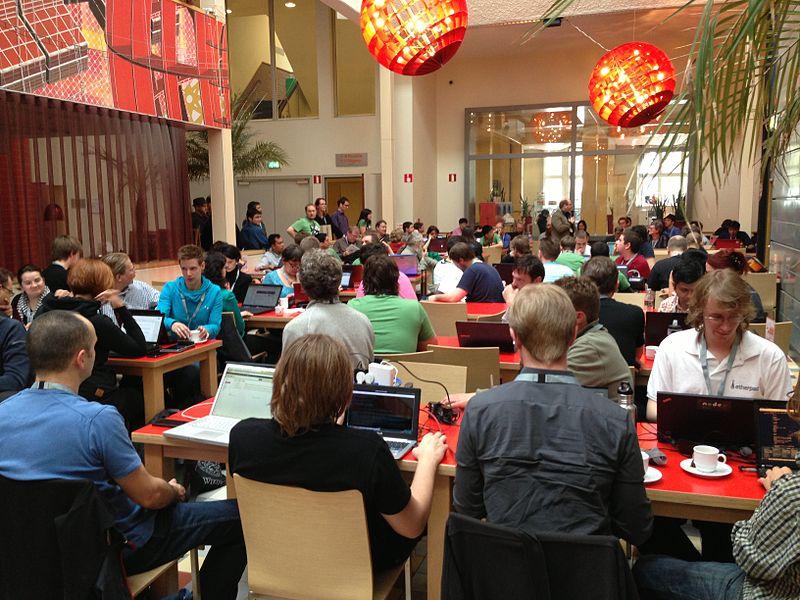

For many of us, our cell phone is our lifeline to the outside world. These days we can use mobile technology to pay bills, make a reservation, reorder medications or check for callbacks from a prospective employer or a future landlord. We can monitor our checking account, keep up with news and local happenings and stay in moment-to-moment contact with loved ones at home.
While it’s hard at times to think of life without our little transportable backup, the truth is mobile technology has revolutionized the way we live our lives, both at home and while on the go.
Mobile Technology and Homeless Populations
And it also plays an indispensable role in the daily lives of those who don’t have a place to call their own. According to the National Alliance to End Homelessness, there are more than 600,000 people without a home in which to sleep on any given night. That includes not only people who live on the street or in shelters for long periods of time due to unemployment, illness or financial problems, but those who are temporarily without a place to live. For the homeless, the tangible access to a phone can mean the chance to reserve a bed in a shelter or find a place to get a warm meal. It ensures a way to call for help in distress or medical need. And it means that someone who doesn’t have an address to put down on an application can receive that all-important call for work that may give them the funds to eventually find a place of their own.
But there are huge challenges for the homeless when it comes to mobile technology. According to Allan A Baez, the special projects coordinator of Disruptive Innovations for Community Technology Alliance (CTA), the first obstacle is usually price. CTA, which is based in San Jose, California, manages county databases that track government funding for homeless and low-income populations (a mandate overseen by the federal government and used by some non-governmental organizations as well). Baez works with research projects that explore ways of providing mobile technology options for that sector.
One of the take-aways from a recent CTA meeting, says Baez, is that although many homeless individuals do have mobile phones, "the major carriers are just too expensive for our homeless population." Major carriers like Metro PCS and T Mobile, which own a large portion of the mobile phone market in Santa Clara County where CTA is based, are able to provide service to homeless individuals, but many can’t afford the cost. Smaller carriers like Tracfone and StraightTalk either have difficulties connecting with the community, or provide emergency connection but don’t provide Internet and texting capabilities.
But just as compelling, says Baez, are the statistics when it comes to the homeless who do use mobile technology:
- 62 percent of homeless individuals surveyed own a mobile phone
- 51.8 percent do not receive grants or free service; they pay for their phone service with their own income
- 40.4 percent are job seekers. Their average income is just over $600 per month.
- 50 percent of those with phones in Santa Clara County rely upon a major carrier for their cell phone service, even though the cost is considered prohibitive for individuals who may earn enough to cover their food, but not enough to pay for a place to live.
Mobile Technology: Transforming Lives
After a six-month study speaking to homeless individuals in the field, social service case managers and NGOs that provide services to the community, CTA came to the conclusion that what was needed was a mobile phone service specifically geared to the homeless and low-income sector. The input it has received from nonprofits in the Silicon Valley and beyond is helping to further a revolution in mobile technology: The concept that a cell phone isn’t just a benefit for the privileged, but a tool that can transform lives.
Fay Arjomandi, president of Vodafone Americas Foundation, which works to facilitate research and dialogue in the telecom market, points out that mobile technology has a wide range of applications that assist individuals in disadvantaged situations. Research has shown that in some cases, the phones become tools for creating jobs by giving individuals the ability to participate in research projects that require photos and data from real-time events in the city. The photo capabilities of a mobile phone provide a way to connect with a potential employer and new income. In an indirect way, it can also help to boost the confidence and self esteem that is so necessary in a competitive job market.
New Educational Resources
And the cell phone provides an innovative way to connect with educational resources around the city where individuals "can learn and master a skill set via a mobile phone," says Arjomandi. She adds that the hidden benefit is in the incentive it gives to the distance education student. "They can see the impact on their lives everyday."
Mobile Technology and Homeless Population Needs: An 'Emerging Market'
Elaine Carpenter, who serves as the vice president of Business Development for the mobile tech research firm ZeroDivide, says research shows that mobile technology now has the capability to cross social boundaries in surprising ways. The Text a Shelter application, which is designed to help distressed teens find safe shelter in the city, can be used to assist both homeless youth and those in need of agency support.
"(It) really helps connect teens who are homeless or aging out of the foster care system with shelter and crucial resources," says Carpenter. "A teen can text a shelter and a current zip code to a certain number and will receive a message with the location and phone number of the nearest shelter or any organization.
"It really points up the fact that there are innovative ways that we know that teens as challenged as they are financially, a lot of them do have phones that have texting capabilities. (This) is just an example of (one of the) ways that you can use innovative applications that use texting to reach homeless, and in this case, homeless youth." Vodafone Americas' financial assistance helped bring ZeroDivide's research on this topic to light.
Baez says that homeless and low-income "is an emerging market" and a vital resource that could one day help end homelessness. And Santa Clara County’s high ratio of homeless and low-income residents is helping to underscore that point. The upcoming hackathon that CTA is participating in at Santa Clara University on Feb. 28 is just one more indication that mobile technology, with all of its emerging uses, truly does have the ability to transform the way we live and view the world.
The Alamo in Manhattan: David Shankbone
Hackathon: Multichill
Women in CSR: Nichole Lecher, Northwestern Mutual


Welcome to our series of interviews with leading female CSR practitioners where we are learning about what inspires these women and how they found their way to careers in sustainability. Read the rest of the series here.
TriplePundit: Briefly describe your role and responsibilities, and how many years you have been in the business.
Nichole Lecher: I am proud to serve as the director of strategic philanthropy and community relations at Northwestern Mutual. My work with the Northwestern Mutual Foundation drives sustainable social impact in the communities in which our employees and financial representatives live and work.
Two years ago, I came to the Northwestern Mutual Foundation to spearhead the strategic development and launch of the Childhood Cancer Program, our first-ever national signature initiative. Our program is dedicated to accelerate the search for a cure to childhood cancer and to provide support to kids and families facing the daily struggles of this disease. In just two years, we have brought this program to more than 10,000 Northwestern Mutual financial representatives and staff, as well as 5,000 employees at our corporate headquarters in Milwaukee.
In addition, my work includes oversight of the Foundation’s strategy, operations and other relationships with key nonprofit partners.
3p: How has the CSR program evolved at your company?
NL: Northwestern Mutual has always had a “do what’s right” ethos, which was applied in all areas of our business and community relationships.
Our Foundation’s financial giving and volunteerism historically supported a number of important social causes in our local communities. As those of us working in CSR know, there are numerous issues affecting our society and it’s easy to spread your resources thin as you try to support those many needs. For us, a broad strategy also made it challenging to measure our social impact and ensure that we were fueling positive changes in our communities.
Over the past five years, we’ve worked to narrow our focus and become more strategic in our giving. In 2012, we went through an extensive process to refine our strategy. From that process, we created a vision that identifies tangible social outcomes where we believe we can make the greatest impact and how the assets and people of Northwestern Mutual can better achieve those outcomes.
The launch of our Childhood Cancer Program is a major way we’ve evolved our CSR efforts. Our program focuses on accelerating the search for a cure for childhood cancers and helping children and their families receive the assistance they need to fight this disease. Cancer is the leading cause of death by disease in children under the age of 15 in the U.S. Yet, less than five percent of the federal government’s budget for cancer research supports childhood cancer. Through our signature partners, Alex’s Lemonade Stand Foundation and Starlight Children’s Foundation, we have donated more than $4.65 million, supporting more than 2,400 children and families, and funding 23,465 childhood cancer research hours.
We know that there is much more work to do. A 2013 study, commissioned by Northwestern Mutual, showed that 51 percent of childhood cancer researchers would like to dedicate more time to finding better treatments and cures for childhood cancer; however, nine out of 10 (91 percent) say lack of research funds is the top obstacle. This is a solvable issue and we are working every day to support cutting-edge research that will accelerate life-saving treatments and cures.
Supporting this cause also aligns with our brand and values, provides turn-key engagement opportunities for our financial representatives and offers measureable impacts to our reputation.
3p: Tell us about someone (mentor, sponsor, friend, hero) who affected your CSR journey, and how.
NL: I owe an incredible amount of gratitude to John Kordsmeier, the President of the Northwestern Mutual Foundation, for my CSR journey. Previous to my current role, I worked for a decade in business improvement and strategic planning. Corporate philanthropy and sustainability were new areas for me. John had full faith in my abilities to help redefine the Foundation strategy and launch the Childhood Cancer Program. He embodies the spirit of giving back and fosters a collaborative environment that inspires others to achieve a greater good. He works diligently, personally and professionally to improve the lives of the families and communities we support. He’s truly an inspiration.
3p: What is the best advice you have ever received?
NL: To be authentic – this transcends both personally and professionally – if you’re not true to who you are as an individual or as a company, you’re not able to make the impact you’re seeking to achieve.
3p: Can you share a recent accomplishment you are especially proud of?
NL: The Childhood Cancer Program has provided me with many accomplishments to be proud of, but perhaps I’m most proud of seeing the vision of the Childhood Cancer Program take hold in real lives – children’s lives are being saved because they were able to travel to treatment because of the Northwestern Mutual Foundation’s support of Alex’s Lemonade Stand’s Travel Fund. Tens of thousands of families will receive a more comfortable treatment experience through the Northwestern Mutual Day Hospital at Children’s Hospital of Wisconsin. And with 88 percent of our offices nationwide participating in our program in just 18 months, the impact we can make for kids and families is exponential.
3p: If you had the power to make one major change at your company or in your industry, what would it be?
NL: Within every company, launching a new program is one challenge – communicating it to everyone across the company is entirely another. Trying to get everyone to join our cause and see the potential impact takes time and effort. We’ve made great strides in getting our employees and financial representatives to engage in our programs – but there is still so much to do to get even more people involved and understand the power of what we can accomplish together. I wish that we had the power to instantly get everyone in our company onboard and join us in our efforts.
3p: Describe your perfect day.
NL: I can find perfection in every day. Snuggling with and being a great mom to our children, engaging with incredible colleagues, and giving back to my community creates a demanding, hectic – and incredibly fulfilling – day.
Organic and Enviro Groups Call for GMO Labeling by Feds
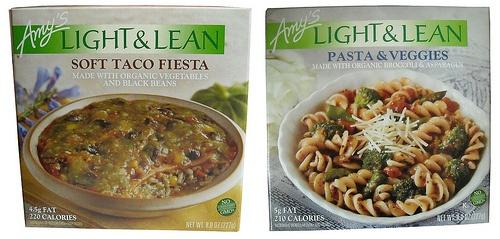

Organic food producers and environmental organizations have a persuasive request for President Obama: Require labeling for GMO foods.
As voter-led initiatives ramp up nationwide, some of the country’s largest environmental organizations and most popular organic brands are leading their own campaign to urge federal labeling of foods that contain genetically modified organisms (GMO).
More than 200 of the country’s largest and smallest voices in the environmental movement have penned a letter calling on the federal government to require labeling of GMO foods. Food manufacturers like Amy’s Kitchen, Ben & Jerry’s and Eden Foods have been joined by environmental farming, research and advocacy groups that include As You Sow, Oregon Tilth, Sierra Club and Center for Environmental Health in this latest call for federal oversight.
And the move isn’t limited to those focused on organic food production or specific ecological research and advocacy. Some of the world’s largest food producers, including General Mills, Blue Diamond and Coca-Cola, have already made their feelings known regarding GMO labeling.
In a blog post last year, General Mills explained that it had nothing against labeling regulation, it just didn’t feel states should be administering that oversight.
"The lack of a national standard complicates the matter for businesses that may wish to produce non-GM foods, and a patchwork of differing state standards would only confuse consumers wishing to buy them," said General Mills.
That’s apparently why it’s part of its own 300-strong consortium that is pushing for federal regulation of GMO labeling.
So while states struggle with the daunting prospect of regulating a multi-billion dollar group of companies that may have the financial clout to tie them up in court for decades, consumers, companies and NGOs are stealthily working out the process themselves.
With consumer pressure mounting on this issue, some of the largest cereal companies have already realized that the easiest path is to create a selection of non-GMO ‘niche’ products, like regular Cheerios and Grape Nuts … while they wait for President Obama to see the mounting title wave of calls for federal regulation.
Oregon Tilth: Ecotrust
Amy's Kitchen: TheImpulsiveBuy